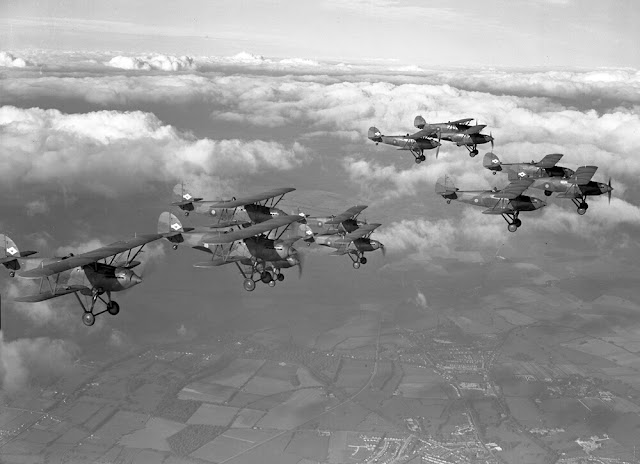Okay, your blogmeister has to clear that one up right outta the gate - no, the YB-49 was not a 'stealth' aircraft. The technology, and even the notion simply did not exist back then, except maybe in the minds of a few overly forward-thinking aeronautical engineers (somewhat doubtful) and one or three pulp rag and/or radio science fiction writers (much more likely).
Nonetheless, it would seem that the YB-49 did indeed possess certain qualities that fit in with the idea of 'stealth', most notably its reputed small-ish radar cross section (RCS). Your blogmeister has no data, hard or otherwise, to support this, just anecdotal schtuff. But, given what little he knows of such matters, the idea that the YB-49 was kinda-semi-sorta 'stealthy' and had a small-ish RCS is plausible in his mind.
Okay, 'nuffa-dat-schtuff. UFOs? Well, to some, or even many back then, yeah... this thing definitely would'a brought UFO vibes, especially if viewed from the angle at which the photo below was snapped. And people's imaginations... well, this is neither the time, nor the blog. So let's just say that the YB-49 was undoubtedly futuristic for the time, no matter how you looked at it. And maybe a little otherworldly-lookin' as well. But it certainly wasn't flown by little green men of any description, unless the pilot had scarfed down a bad breakfast burrito the morning of a test-flight, but... I don't think breakfast burritos were a thing back then either, so... just forget it.
Come to think of it, forget all'a what you just read, cuz' it was a pretty long-winded way of saying "your blogmeister was just being funny with the title of this-here installment of TWW".
Enjoy, don't take yourselves too seriously, and remember that lead is better for hats than tin foil, but it'll kill you much morely...

Edwards Air Force Base / Air Force Flight Test Center Website














a.jpg)












